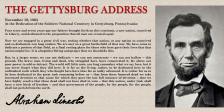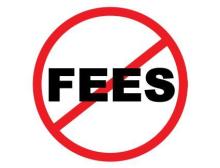I took a class in “logic” at UVM. Upon realizing it was far more complicated than solving problems like the knights & knaves puzzle, I withdrew.[1] As such, I’m not certain that the following works as a proper syllogism.
- This blog is about legal ethics, professional responsibility, and the Rules of Professional Conduct.
- The Rules of Professional Conduct include a section on pro bono.
Ergo, I should post on the pro bono rules every so often.
Even if it makes logical sense, I’m sometimes reluctant to do so. Or, in legal ethics parlance, I feel conflicted about doing so.
Why? First, some background.
In 2017, the ABA’s Standing Committee on Pro Bono & Public Service surveyed 47,000 lawyers from 24 states on pro bono work. Here’s an excerpt from the final report:
- “In Vermont, 77.5% of the attorneys reported having done at least some type of public service activity in 2016 – the highest percentage among the states participating in the survey. Additionally, attorneys in Vermont outperformed other states in terms of the percent having offered reduced fee services in 2016. Approximately one third (33.6%) of Vermont’s attorneys had offered such services. Finally, Vermont was one of the top states in terms of the percent of attorneys having offered limited scope representation as part of their practice, surpassed only by Wisconsin; 41.5% of Vermont’s attorneys offered such services in 2016.”[2]
Hence my conflict.
- Vermont lawyers already give so much.
- I know how hard it is to practice law right now.
Ergo, I’m conflicted about a post that will be read as asking lawyers to give even more.
That said, today is #GivingTuesday. As I have in prior years, I’m marking the event by asking lawyers to consider pro bono. In 2018, I used the starfish story. Then, on #GivingTuesday in 2019, I reminded lawyers that “the hashtag won’t be trending tomorrow. But those it’s intended to help will still need your time. Tomorrow and many tomorrows to follow.”
The need persists. To learn more about opportunities, check out the resources below. In the meantime, thank you for considering this post. And thank you all that you do and all that you’ve done.

[1] I was a master of “add/drop” deadline as well as of “withdraw – passing.”
[2] Supporting Justice: A Report on the Pro Bono Work of America’s Lawyers, p. 39. On page 41, the report goes on to note that states whose lawyers had “high levels of motivation for doing pro bono included Maine, Oregon, California, New York, Mississippi, and Vermont. Maine and Oregon were leading states for the percent of attorneys (89.3% and 85.8% respectively) indicating that they believe doing pro bono is important. Both states also had relatively low ratings for the list of discouraging factors (2.8 and 2.69 respectively). California and New York were both leading states for the average ratings for the list of motivating factors (2.9 and 2.84 respectively). Mississippi and Vermont were both leading states in terms of the percent of attorneys indicating they were likely to do pro bono in 2017 (62.9% and 58.9% respectively). Meanwhile, both Wyoming and Vermont had particularly low ratings for the list of discouraging factors (2.79 and 2.81 respectively).”
OPPORTUNITIES & RESOURCES
- Mary Ashcroft is the Vermont Bar Association’s Legal Access Coordinator. E-mail Mary for information related to the VBA’s pro and low bono programs.
- Sam Abel-Palmer is the Executive Director of Legal Services of Vermont. Formerly known as Lawline of Vermont, LSV has opportunities here.
- Vermont participates in the ABA’s Free Legal Answers program. As I noted in Pro Bono: There’s an App for That!, think of VT Free Legal Services “as pro bono without ever having to leave your desk. All you have to do is sign up, then pick & choose the questions you want to answer. It’s that simple.”
- A 7-question quiz that is intended to highlight pro bono FAQs







